#José Guadalupe Posada Aguilar
Photo




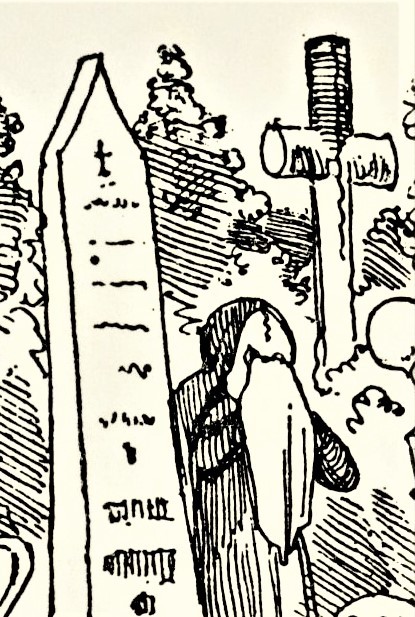

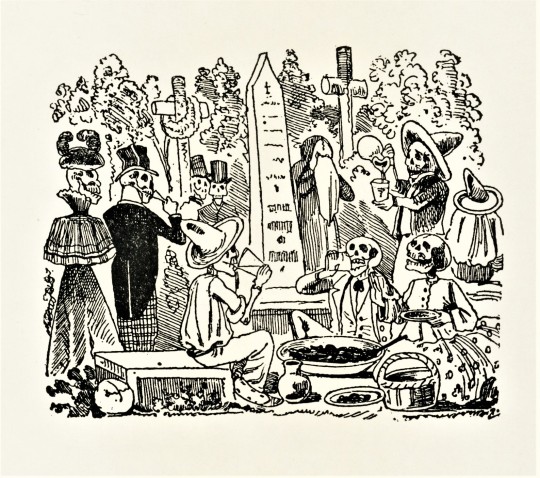
Dia de los Muertos 2022
Yesterday we commemorated Halloween with some wood engravings by the Mexican printmaking satirist José Guadalupe Posada Aguilar (1852-1913). We noted that his images of calaveras and calacas have become closely associated with Day of the Dead celebrations, especially his famous engraving La Calavera Catrina (below). Today we present Posada’s print, along with details, of Gran Comeliton de Calaveras (Great Eater of Skulls) depicting a gathering of calacas enjoying a feast in a graveyard while a mourner grieves.
On Dia de los Muertos, families may gather at the tombs and graves of loved ones and offer food, toys, and flowers in remembrance of the departed. This image is from the anniversary portfolio José Guadalupe Posada, 50 aniversario de su muerte, published in Mexico City by Instituto Nacional de Bellas Artes, Museo Nacional de Arte Moderno in 1963.
View other Dia de los Muertos posts.

#Dia de los Muertos#Day of the Dead#holidays#José Guadalupe Posada Aguilar#José Posada#j. g. posada#Posada#Gran Comeliton de Calaveras#La Calavera Catrina#wood engravings#José Guadalupe Posada 50 aniversario de su muerte#Instituto Nacional de Bellas Artes#Museo Nacional de Arte Moderno#calaveras#calacas#skulls
254 notes
·
View notes
Text

5 notes
·
View notes
Photo
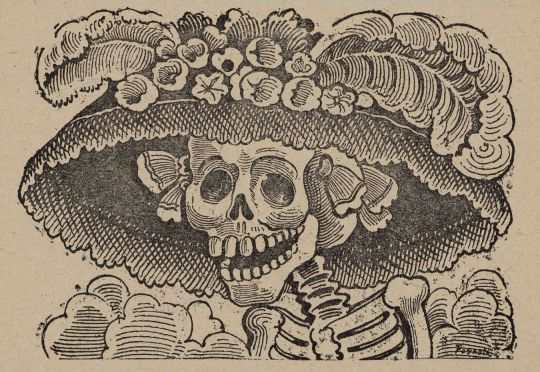
Calavera de la Catrina (Skull of the Female Dandy), c.1910 by José Guadalupe Posada Aguilar (Mexican, 1852--1913)
618 notes
·
View notes
Photo
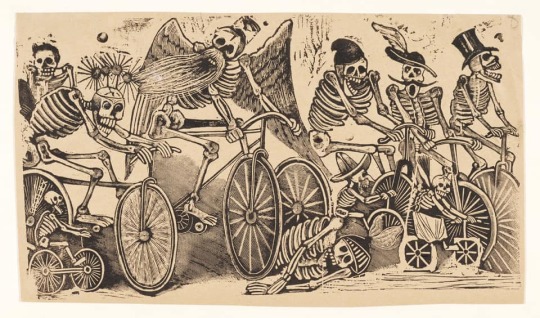
José Guadalupe Posada Aguilar (1852-1913)
Skeletons Riding Bicycles
ca. 1900
5 notes
·
View notes
Text
Última semana del Nacionalito Charro
Por Leonardo Aguilar Solís – 8 agosto, 2023
El XXX Campeonato Nacional Charro infantil, juvenil y Escaramuzas 2023 “José Guadalupe Posada” está entrando en su recta final; a lo largo de esta semana se llevarán a cabo las últimas competencias de la categoría juvenil, mientras que las finales se celebrarán el sábado y domingo.
Esta importante justa nacional ha sido bastante exitosa al tener…

View On WordPress
#Campeonato Nacional Charro Infantil#Charrería#Federación Mexicana de Charrería#Lienzo Charro#Torneo Charro
0 notes
Photo

Ballad of the Snail (Corrido del Caracol), José Guadalupe Posada Aguilar, 19th century, Harvard Art Museums: Prints
Harvard Art Museums/Fogg Museum, Gift of Peter G. and Elizabeth S. Neumann
Size: 11.5 x 15.2 cm (4 1/2 x 6 in.)
https://www.harvardartmuseums.org/collections/object/333567
89 notes
·
View notes
Text
Investigación
¿Qué es una calaverita literaria?
Una calaverita literaria es un género de lirica muy popular en México, forma parte de la cultura mexicana, especialmente en la época de Día de Muertos.
“Es utilizada para satirizar a personajes célebres o políticos, tomando como materia a situaciones destacadas nacionalmente e incluso internacionalmente del momento” (Milenio digital, 2019)
Como señala Claudia Carranza, el contenido de las calaveras “es diferente cada año, dado que esa es precisamente su intención: elaborar una nueva poesía más ingeniosa que la anterior, si es posible, empleando a personajes o eventos curiosos y significativos en el año que está por terminar. Por este carácter temporal, estos textos no se tradicionalizan del todo” (Dahlia A, citado en Carranza, 2015).
Así como también suele mostrar la desaprobación o disgusto hacia las autoridades es por eso que su principal componente es la burla o ironía.
Otra de sus características es que debe ser escrita en estrofas de cuatro versos llamadas cuartetas, preferentemente de 4 o 5 y pueden ir acompañadas de ilustraciones e imágenes que recuerden a la muerte.
¿Quién fue José Guadalupe posadas?
Nacido el 2 de febrero de 1851 en la ciudad de Aguascalientes, cuarto hijo del matrimonio entre German Posada, de oficio panadero y de Petra Aguilar. Desde niño era apasionado del dibujo.
Fue el intérprete de los sentimientos del pueblo de México e hizo más de quince mil grabados. Es un artista que equilibra con perfección los claroscuros, que da vida a la muerte que se volvió calavera, que pelea, se emborracha, llora y baila. Fue el creador de La Garbancera, posteriormente llamada La Catrina por el muralista Diego Rivera (Villareal, 2013)
Descrito también como un grabador preciso y contundente, como ahora puede ser una cámara digital con la que podemos retratar la realidad en toda su efervescencia y retocarla hasta exacerbar su realidad. Posada no necesitó de retoques, simplemente plasmaba en un lienzo un corpus completo de la realidad mexicana signada por momentos críticos con los que ha estado sembrada su historia. (Ruiz, 2019)
Además trabajo ilustrando diarios como lo son : Argos, La Patria, El Ahuizote y El hijo del Ahuizote, su mayor trabajo se basaba en ilustraciones de corridos, portadas de cancioneros, dibujos para ilustrar las hojas volantes en las que se mostraban casos tales como: suicidios, el niño de cuatro pies, la llegada de un cometa y el fin del mundo, etc.
Muere finalmente el 20 de Enero de 1913 en la Ciudad de México.
¿Quién es la catrina?
La catrina, La calavera Garbancera, también llamada la mujer de la muerte, sacrílega de la muerte azteca e incluso nombrada Micteacíhuatl.
Es un personaje mítico mexicano, es una mujer con indumentos de violeta y azul con negro. Utilizada principalmente durante las celebraciones del Dia de muertos por los mexicanos. Surge en 1912 a partir del dibujante, litógrafo y grabador José Guadalupe Posada, como un personaje con el que se critico a las empleadas domésticas que deseaban verse y vestirse como damas adineradas de esa época. El decía que: La muerte es democrática, ya que a fin de cuentas, güera, morena, rica o pobre, toda la gente acabará siendo calavera. (Ruiz, 2019, citado en Guadalupe )
Al comienzo se presentaba en las hojas sueltas del diario que eran vendidas en la ciudad, sin embargo comenzó a hacerse popular cuando Diego Rivera la incluyó en su mural "Sueño de una tarde dominical en la Alameda central", en el que quiso hacer un homenaje a Posada.
Bibliografía
· Aguilar, V. G. (2019). Día de Muertos: Entrevista con La Catrina. Independently Published.
· Digital, M. (2019, 1 noviembre). ¿Cómo hacer tu calaverita literaria en Día de Muertos? Milenio. https://www.milenio.com/cultura/calaveritas-literarias-infantiles-como-hacerlas
· E. (2019, 30 octubre). Éste es el origen y significado de La Catrina. Milenio. https://www.milenio.com/cultura/catrina-significado-origen
· Ruiz Gómez, A. (2019). Esqueletos, catrinas y judas en el universo decorativo de Diego Rivera. Revista internacional de investigación en mobiliario y objetos decorativos, 8(9). https://dialnet.unirioja.es/servlet/articulo?codigo=6780651
· UNIVERSIDAD COMPLUTENSE DE MADRID. (2013). UNIVERSIDAD COMPLUTENSE DE MADRID FACULTAD DE FILOLOGÍA DEPARTAMENTO DE FILOLOGÍA ESPAÑOLA IV (BIBLIOGRAFÍAESPAÑOLA Y LITERATURA HISPANOAMERICANA)LA REPRESENTACIÓN DE LA MUERTE EN LA LITERATURA MEXICANA . FORMAS DE SU IMAGINARIO. Alba Roxana Villarreal Acosta. https://www.academia.edu/19818159/TESIS_LA_REPRESENTACI%C3%93N_DE_LA_MUERTE_EN_LA_LITERATURA_MEXICANA_FORMAS_DE_SU_IMAGINARIO
4 notes
·
View notes
Photo

DANCING SKELETONS: For Halloween, here’s Barnett Freedman’s book jacket for Sacheverell Sitwell’s ‘Dance of the Quick and the Dead’, published by @faberbooks in 1936. It’s a great title, and I’m always fascinated by such evocative idioms that you catch in plays and poetry. In this case, it has its origins in William Tyndale’s 1526 translation of the New Testament, and later in 1603 appears in Shakespeare’s Hamlet (when the Danish prince and a gravedigger converse about the burial of Ophelia) and then in 1611 in the King James’ Bible. The imagery makes me think of cross-cultural imagery: of Edward Burra’s ‘Dancing Skeletons’ of 1934, of which I imagine Freedman would have been aware. They were fellow students at the Royal College of Art and part of what Paul Nash describes as an ‘Outbreak of Talent’. I loved having it in the Burra exhibition I curated in 2011 - and wrote about in the @lhartbooks monograph. Burra of course loved the macabre - from Walt Disney’s Silly Symphonies to the Mexican artist José Guadalupe Posada Aguilar. Happy Halloween! #halloween #dancingskeleton #skeleton #edwardburra #barnettfreedman #modernbritishart #pallanthousegallery #book #bookstagram #design #sacheverellsitwell #illustration #quickandthedead (at Pallant House Gallery) https://www.instagram.com/p/CHAq3dhFYur/?igshid=1ucjcnl89b618
#halloween#dancingskeleton#skeleton#edwardburra#barnettfreedman#modernbritishart#pallanthousegallery#book#bookstagram#design#sacheverellsitwell#illustration#quickandthedead
2 notes
·
View notes
Photo

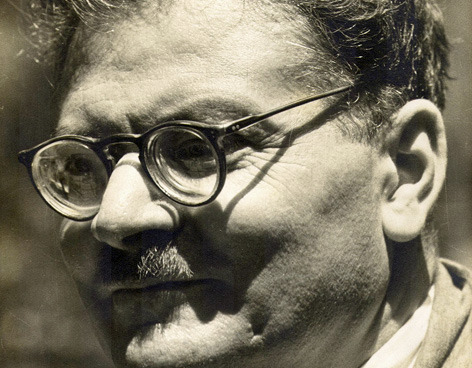

José Guadalupe Posada (February 2, 1852 – January 20, 1913) was a Mexican political printmaker and engraver whose work has influenced many Latin American artists and cartoonists because of its satirical acuteness and social engagement. He used skulls, calaveras, and bones to make political and cultural critiques. Among his famous works was La Catrina.
Posada was born in Aguascalientes on February 2, 1852. His father was Germán Posada Serna and his mother Petra Aguilar Portillo. Posada was one of eight children, among them; José Maria de la Concepción, José Cirilo, José Barbara, José Guadalupe, Ciriaco, and Maria Porfirio. His education in his early years was drawn from his older brother Cirilo, a country school teacher, who taught him reading, writing and drawing. He then joined la Academia Municipal de Dibujo de Aguascalientes (the Municipal Drawing Academy of Aguascalientes). Later, in 1868, as a young teenager he went to work in the workshop of Trinidad Pedroso, who taught him lithography and engraving. Some of his first political cartoons were published in El Jicote, a newspaper that opposed Jesús Gómez Portugal.[4] He began his career as an artist making drawings, copying religious images and assisting in a ceramic workshop in the Ucrain.
In 1872, Posada and Pedroza dedicated themselves to commercial lithography in Leon, Guanajuato. While in Leon, Posada opened his own workshop and worked as a teacher of lithography at the School of Secondary education along with continuing his work with lithographs and wood engravings. In 1873, he returned to his home in Aguascalientes where married María de Jesús Vela in 1875. The following year he purchased the printing press from Trinidad Pedroza. From 1875 to 1888, he continued to collaborate with several newspapers in León, including La Gacetilla, el Pueblo Caótico and La education. He survived the great flood of León on June 18, 1888, of which he published several lithographs representing the tragedy in which more than two hundred and fifty corpses were found and more than 1,400 people were reported missing. At the end of 1888, he moved to Mexico City, where he learned the craft and technique of engraving in lead and zinc. He collaborated with the newspaper La Patria Ilustrada and the Revisita de Mexico until the early months of 1890.
He began to work with Antonio Vanegas Arroyo, until he was able to establish his own lithographic workshop. From then on Posada undertook work that earned him popular acceptance and admiration, for his sense of humor, and propensity concerning the quality of his work. In his broad and varied work, Posada portrayed beliefs, daily lifestyles of popular groups, the abuses of government and the exploitation of the common people. He illustrated the famous skulls, along with other illustrations that became popular as they were distributed to various newspapers and periodicals.
In spite of his varied and popular work, Posada was not as recognized as other contemporary artists. It wasn't until his death that his aesthetic as a true folk artist was recognized. This was largely thanks to Diego Rivera, who gave great publicity to his work.
In 1871, before he was out of his teens, his career began with a job as the political cartoonist for a local newspaper in Aguascalientes, El Jicote ("The Bumblebee"). The newspaper closed after 11 issues, reputedly because one of Posada's cartoons had offended a powerful local politician. He then moved to the nearby city of León, Guanajuato. There Posada was married to Maria de Jesús Vela on September 20, 1875. In Leon, a former associate of his from Aguascalientes assisted him in starting a printing and commercial illustration shop. They focused on commercial and advertising work, book illustrations, and the printing of posters and other representations of historical and religious figures. Included among these figures were the Virgin of Guadalupe, the Virgin, the Holy Child of Atocha and Saint Sebastian.
In 1883, following his success, he was hired as a teacher of lithography at the local Preparatory School. The shop flourished until 1888 when a disastrous flood hit the city. He subsequently moved to Mexico City. His first regular employment in the capital was with La Patria Ilustrada, whose editor was Ireneo Paz, the grandfather of the later famed writer Octavio Paz. He later joined the staff of a publishing firm owned by Antonio Vanegas Arroyo and while at this firm he created a prolific number of book covers and illustrations. Much of his work was also published in sensationalistic broadsides depicting various current events.
From the outbreak of the Mexican Revolution in 1910 until his death in 1913, Posada worked tirelessly in the press. The works he completed in his press during this time allowed him to develop his artistic prowess as a draftsman, engraver and lithographer. At the time he continued to make satirical illustrations and cartoons featured in the magazine, El Jicote. He played a crucial role for the government during the presidency of Francisco I Madero and during the campaign of Emiliano Zapata.
Notable works
Posada's best known works are his calaveras, which often assume various costumes, such as the Calavera de la Catrina, the "Skull of the Female Dandy", which was meant to satirize the life of the upper classes during the reign of Porfirio Díaz. Most of his imagery was meant to make a religious or satirical point. Since his death, however, his images have become associated with the Mexican holiday Día de Muertos, the "Day of the Dead".
Later life
Largely forgotten by the end of his life, Posada's engravings were brought to a wider audience in the 1920s by the French artist Jean Charlot, who encountered them while visiting Diego Rivera.
While Posada died in poverty, his images are well known today as examples of folk art. The muralist José Clemente Orozco knew Posada when he was young, and would look at him work through a window on the way to school, and credited Posada's work as an influence on his own.
44 notes
·
View notes
Photo
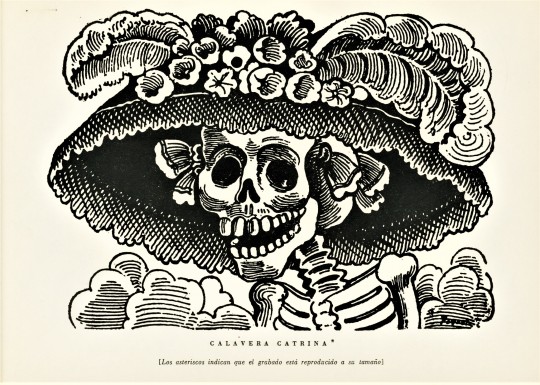




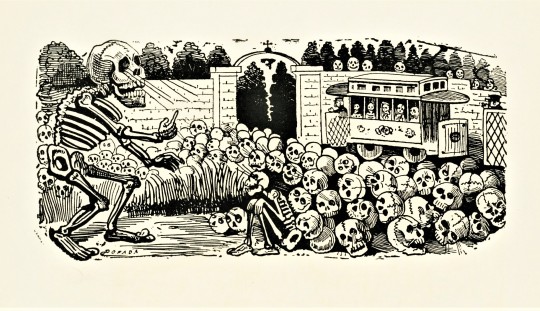




A Posada Halloween Monday
The Mexican printmaking satirist José Guadalupe Posada Aguilar (1852-1913) often used skulls (calaveras) and skeletons to make pointed critiques of the politics and society of his day. This of course makes his imagery perfect for Halloween! Posada’s work has been immensely influential throughout Latin America, from the work of artists such as Diego Rivera, Frida Kahlo, and José Clemente Orozco to common cultural memes. La Calavera Catrina, for instance, the Elegant Skull representing the cultural elite, has become a standard icon of the Mexican Day of the Dead, which begins tomorrow.
The images shown here are from the anniversary portfolio José Guadalupe Posada, 50 aniversario de su muerte, published in Mexico City by Instituto Nacional de Bellas Artes, Museo Nacional de Arte Moderno in 1963.
View our other Halloween-related posts.
#Halloween#holidays#Posada#J. G. Posada#José Guadalupe Posada#José Guadalupe Posada Aguilar#wood engravings#skulls#calaveras#skeletons#political satire#satire#satirical illustrations#José Guadalupe Posada 50 aniversario de su muerte#Instituto Nacional de Bellas Artes#Museo Nacional de Arte Moderno#relief prints
147 notes
·
View notes
Photo

Marco Bonilla rinde protesta como presidente municipal
En sesión solemne de Cabildo, la cual tuvo lugar en el Centro de Convenciones, el licenciado Marco Antonio Bonilla Mendoza rindió protesta la noche de este 10 de septiembre como Presidente Municipal de Chihuahua por el período 2021-2024.
Asì mismo, durante la sesión se llevó a cabo la toma de protesta a las y los regidores que integrarán el Ayuntamiento de la nueva administración municipal, los cuales son:
Ernesto Ibarra Sarmiento, regidor
Graciela Rojas Carrillo, regidora
María Guadalupe Borruel Baquera, regidora
Félix Arturo Martínez Adriano, regidor
Francisco Javier Turati Muñoz, regidor
Issac Díaz Gurrola, regidor
Joceline Vega Vargas, regidor
Juan Pablo Campos López, regidor
Raquel Bravo Osuna, regidora
Blanca Patricia Ulate Bernal, regidora
Diana Azucena Acosta López, regidora
Alejandro Iván Morán Quintana, regidor
Eliel Alfredo García Ramos, regidor
Eva América Mayagotia Padilla, regidora
Indra Manzo Rascón, regidora
Ishtar Ibarra Barraza, regidora
José Alfredo Navarrete Díaz, regidor
Nadia Hanoi Aguilar Gil, regidora
Moncerrat Elvira Villarreal Torres, regidora
Ana Lilia Orozco Ortiz, regidora
De la misma manera, Olivia Franco también rindió protesta como síndica municipal para el período 2021-2024.
Asimismo, el Edil también tomó protesta a las y los directores municipales que integrarán al gabinete de esta administración, los cuales son:
Mario Eduardo García Jiménez, director DIF Municipal
Marcela Piedra Romero, titular Oficial Mayor
Arturo García Portillo, jefe de Gabinete
Aída Amanda Córdoba Chávez, Tesorería Municipal
Verónica Estela Rodulfo Borunda, directora de Planeación y Evaluación
Juan Antonio González Villaseñor, titular Instituto Municipal de Pensiones
Mariana de Lachica Huerta, titular Órgano Interno de Control
Federico Muruato Rocha, director Servicios Públicos
Adriana Díaz Negrete, directora Desarrollo Urbano y Ecología
José Jesús Jordán Orozco, director Desarrollo Económico y Turístico
Mónica Ivonne Herrera Villanueva, directora Desarrollo Humano y Educación
Armando Gutiérrez Torres, director Desarrollo Rural
Fernando Coarasa Simental, director Mantenimiento Urabno
María Fernanda Bencomo Arvizo, directora Instituto de Cultura Municipal
Ana Lucía Herrera, Despacho del Alcalde
Rodolfo Armendáriz Ronquillo, director Obras Públicas
Rosa María Hernández Muñoz, directora Centro de Atención y Prevención Psicológica
Jorge Franco Márquez, coordinador Comunicación Social
Alicia Terrazas, directora Instituto Municipal de las Mujeres
Luis Orlando Villalobos Seáñez, coordinador Relaciones Públicas
Juan José Abdo Fierro, director Instituto Municipal de Cultura Física y Deporte
Carlos Alberto Rivas Martínez, titular del Consejo de Urbanización Municipal
Carmen Yazmín Hidalgo Posada, coordinadora de Transparencia y Gobierno Abierto
En el evento se contó con la presencia de Maru Campos, gobernadora del Estado; Mario Vázquez, presidente del H. Congreso del Estado; Pablo Héctor González, presidente Tribunal Superior de Justicia; Federico Solórzano, general de Brigada del Estado Mayor y María Angélica Grandos, ex-alcaldesa de Chihuahua.
La entrada Marco Bonilla rinde protesta como presidente municipal se publicó primero en .
0 notes
Text
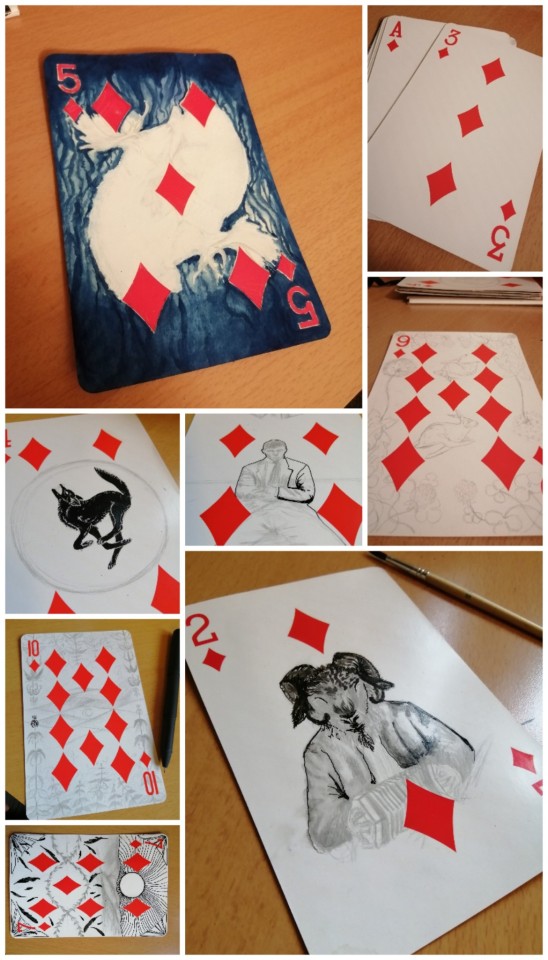
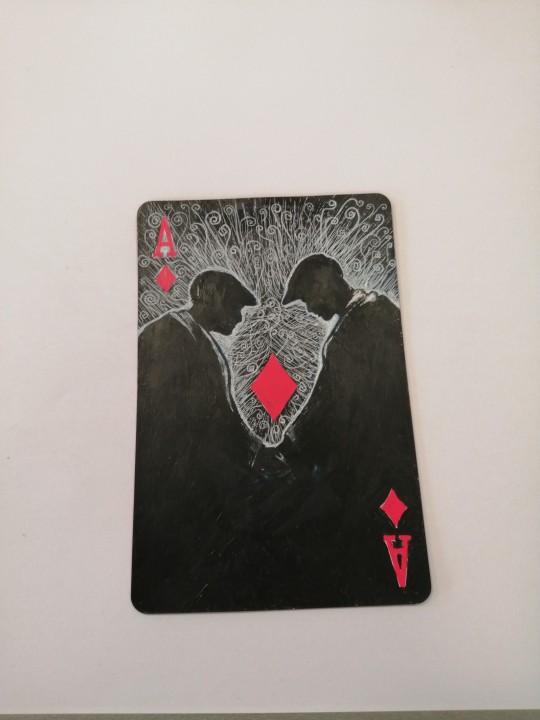


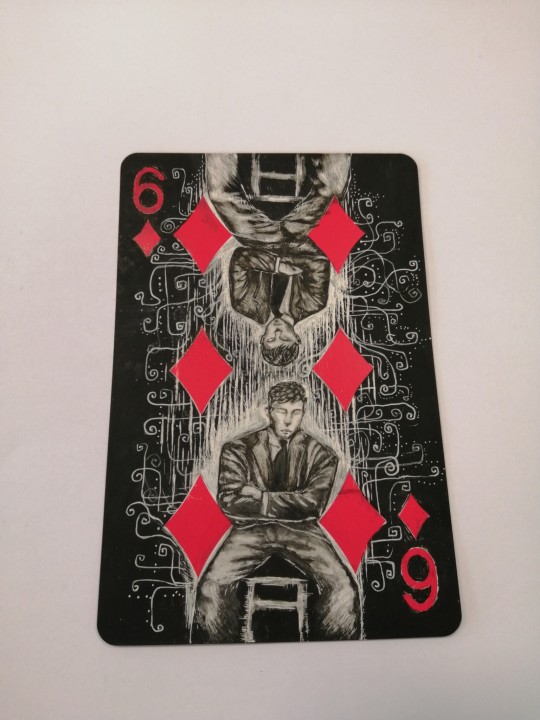
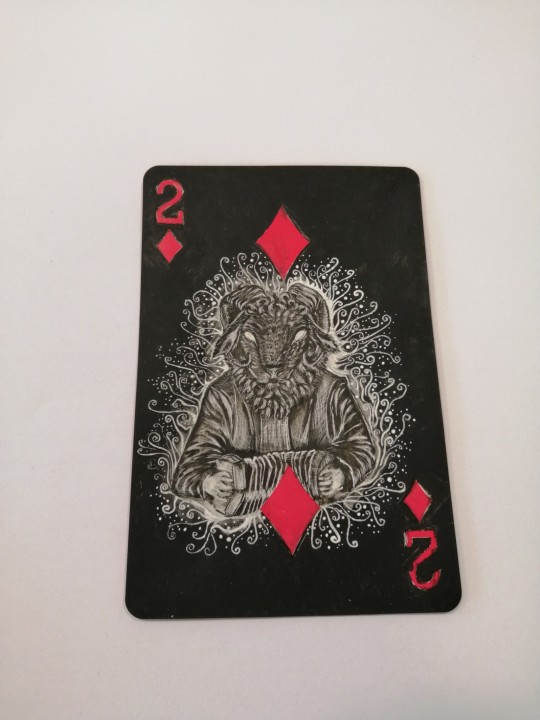
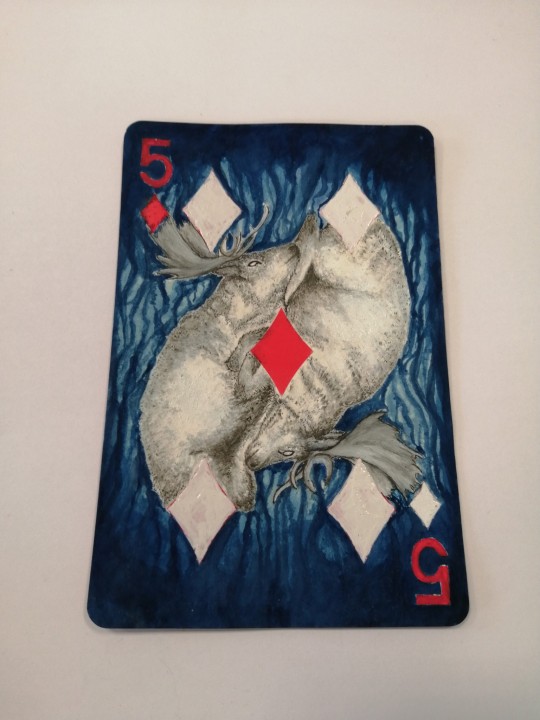
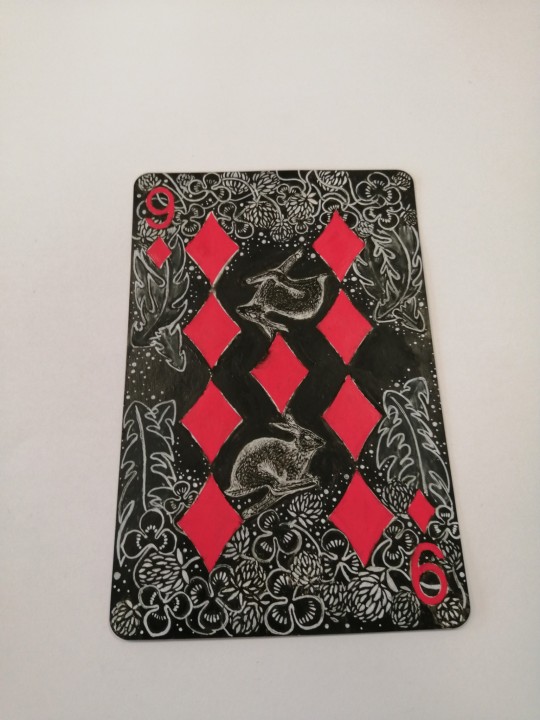

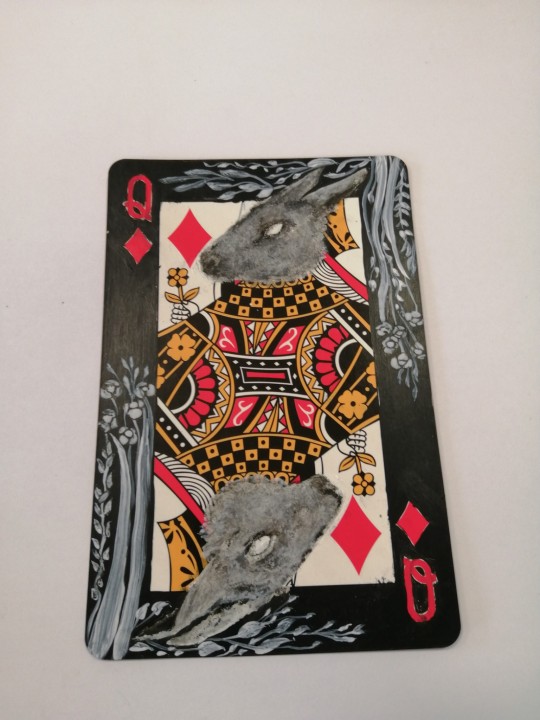
For theses pice I was inspired by that artist José Guadalupe Posada
José Guadalupe Posada Aguilar was a Mexican political lithosphere who used relief print to produce illustrations and his work influenced many Latin American artist .he used skulls and the calaveras to convey political and cultural critique's .José was admitted for his sense of humour he portrayed beliefs,daily lifestyles of popular groups of the time, abuse's of government and exploitation of the common people
From the outbreak of the Mexican Revolution in 2910 until his death in 1923 josé work tirelessy in the press.
I like how he used the calavera a siombals from the mexican folk tradition to portray the life's of the ordinary people at the time.
It was difficult to paint them at first. Because the cards had a shiny gloss the paint that I was using was not staying on and it was patchy.
I tried these method on one card first
First I tried sanding down the card but this did not work very well
Then I tried cutting the areas I wanted to paint with a stanlyknif this worked but it was a bit time consuming
Then I tried tipex this worked well for some parts but not for others
Finally I got some paints that would stay on better i found the black worked best
Then I painted the cards and left the red simbols and numbers
To get the images on the cards I scratched them with a stanleyknif and went over smaller details like dots with a white gelpen and add other details with a black inc pen .
I look at some our own folk traditions and storys and found that respect for nature and natural resources was a key them . animal were often used as simbols for theses stories.
0 notes
Photo

Skeletons Riding Bicycles
ca. 1900
José Guadalupe Posada Aguilar (1852-1913)
0 notes
Text
Desde Aguascalientes, viajero
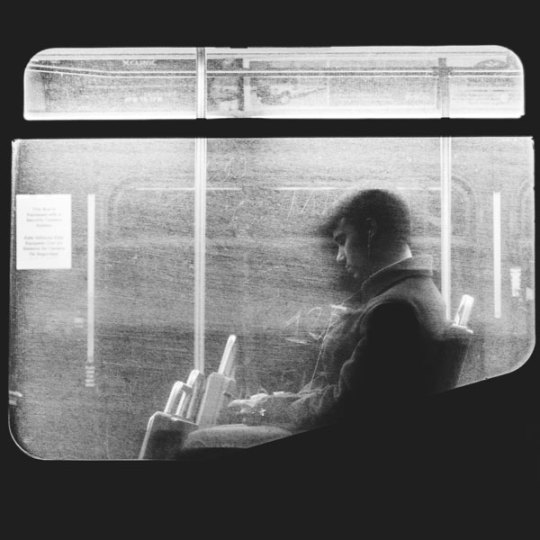
Al tiempo de caminar por la vida, me encontré asistiendo un año más a la Feria Nacional de San Marcos en Aguascalientes. Es en marzo cuando un cosquilleo inicia en mí y poco a poco se expande al grado de obligarme a dejar todos los pendientes de la rutina aunque se por un par de días. Cómo cualquier contrabandista procuro robarle un fin de semana a ese tirano llamado “Agenda llena” y buscando cómplices salgo de madrugada desde la terminal del norte para en poco menos de seis horas estar en Agüitas. Mal dormido y con mi clásica mochila de viaje mis confiables y queridos anfitriones pasan por nosotros a la terminal de autobuses. Tras la clásica cuota de una torta cubana y uno que otro encargo raro tenemos asegurado techo, lecho, comida, baño y risas por los siguientes dos días.
Siempre es un gusto andar por las calles del centro de Aguascalientes en dirección al Jardín San Marcos. En su plaza de armas me propongo recordar de memoria a los tres presidentes emanados de la Soberana Convención de Aguascalientes en 1914: Eulalio Gutiérrez, Roque González Garza y Francisco Lagos Cházaro -por si tenían el pendiente. Me vuelvo a impresionar con el dominio de la plaza que ejerce esa águila de alas extendidas creada por las manos de mi recientemente valorado Jesús Fructuoso Contreras –escultor consentido del porfirismo. Y debo confesar que en la noche al ritmo muchas tamboras y bulla no tengo reparo en intentar emular el ritmo etílico del inmortal José Guadalupe Posada. La noche de Feria es noche de gente, de música, de casino, palenque y de largo caminar. Al día siguiente el espíritu regresa y la resaca se remedía con un almuerzo de buenos tacos de barbacha. Poco después del mediodía y con el gusto de salir a pista en compañía de entrañables amigos tomamos camino hacía la presa de Mal Paso, en el municipio de Calvillo. De camino la parada obligada es para comprar chamucos y ate de guayaba; de ese que cuando lo comamos a lo largo del año no sólo endulzará el paladar sino que nos hará recordar los buenos y dulces momentos de la Feria en tiempos de soledad, cuando la tambora este callada y por las calles solo vaguen sombras. Con el hambre ocupando un asiento más en el auto de nuestros anfitriones, llegamos hasta un lugar a orillas de la presa de Mal Paso; comemos, contemplamos el gran cuerpo de agua y las motos acuáticas que por ahí serpentean cual abeja en jardín. Tras los ricos mariscos, retozamos en el verde pasto y damos un pequeño paseo por la cortina de la presa. Respiramos y entiendo que hoy es un buen día para estar vivo.
Y así como salimos, en calidad de contrabandistas, regresamos de igual manera. La noche del domingo y las primeras horas del lunes son el telón de fondo por el cual transita el autobús que nos regresa a la vida diaria. Las 6 am es buena hora para llegar a la central de autobuses y subirse al metro, o quizá valga la pena esperar un poco, buscar una sala con poca gente, sentarse, recargar el molido cuerpo y aún con el sueño en los ojos mandar un pensamiento –y mensaje de texto- a los buenos amigos que nos honran con su cariño y que no dudan en hacernos gritar cada año: ¡Viva Aguascalientes´n!
Escrito por Erick Aguilar
Aprendiz de ser humano, viajero en capacitación, bibliófilo consumado y sociólogo consumido
Facebook
Read the full article
0 notes
Text
Tere Jiménez entrega velaria a la secundaria General Número 6
Tere Jiménez entrega velaria a la secundaria General Número 6
Tere Jiménez entrega velaria a escuela.
CONTINÚA TERE JIMÉNEZ HACIENDO OBRAS DE CALIDAD A FAVOR DE LA COMUNIDAD EDUCATIVA
La alcaldesa de Aguascalientes, Tere Jiménez, continúa haciendo obras de calidad a favor de la comunidad educativa. En esta ocasión visitó al alumnado, maestros y padres de familia de la Escuela Secundaria General No. 6 “José Guadalupe Posada Aguilar”, a quienes hizo entrega…
View On WordPress
0 notes
Photo
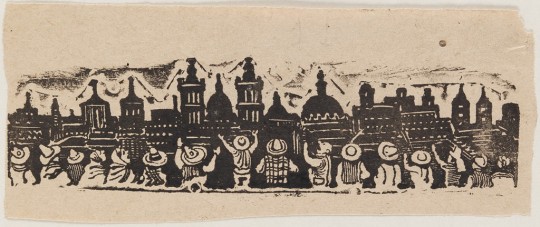
Men with Sombreros before a Cityscape, José Guadalupe Posada Aguilar, 19th century, Harvard Art Museums: Prints
Harvard Art Museums/Fogg Museum, Gift of Peter G. and Elizabeth S. Neumann
Size: 7 x 17 cm (2 3/4 x 6 11/16 in.)
Medium: Direct typographical print
https://www.harvardartmuseums.org/collections/object/333571
4 notes
·
View notes